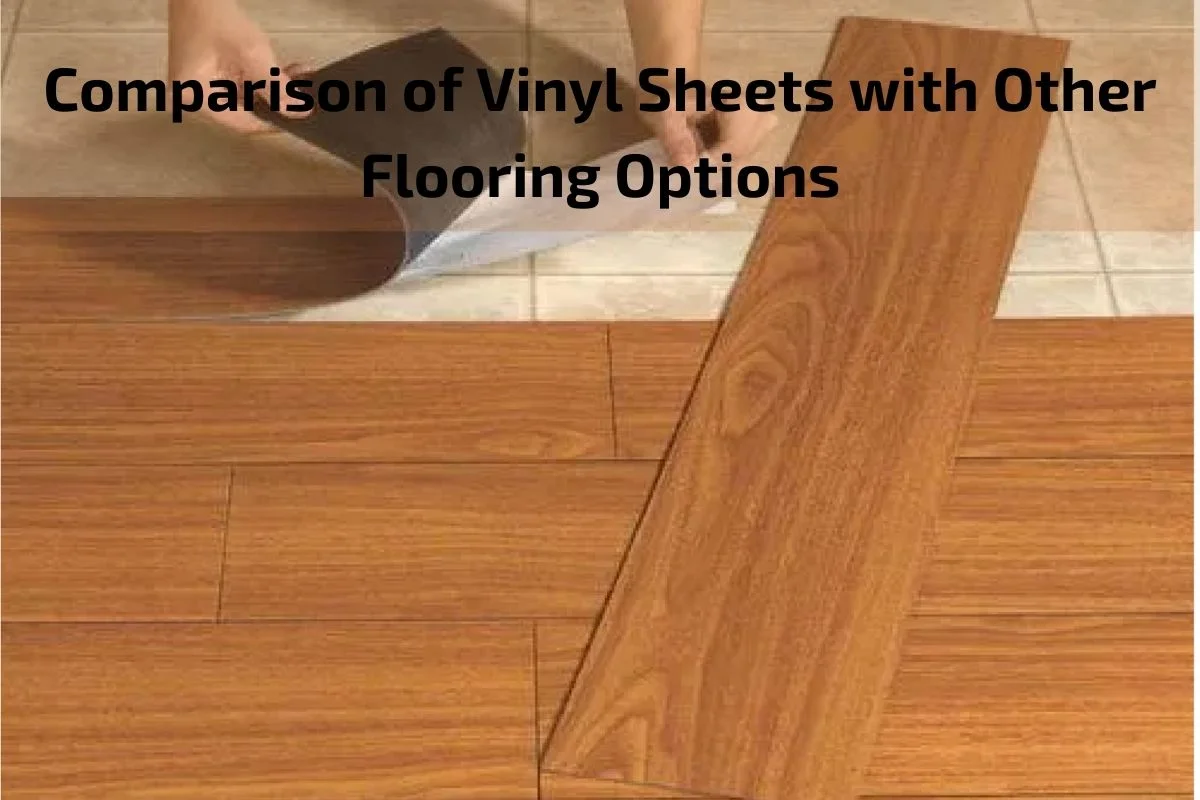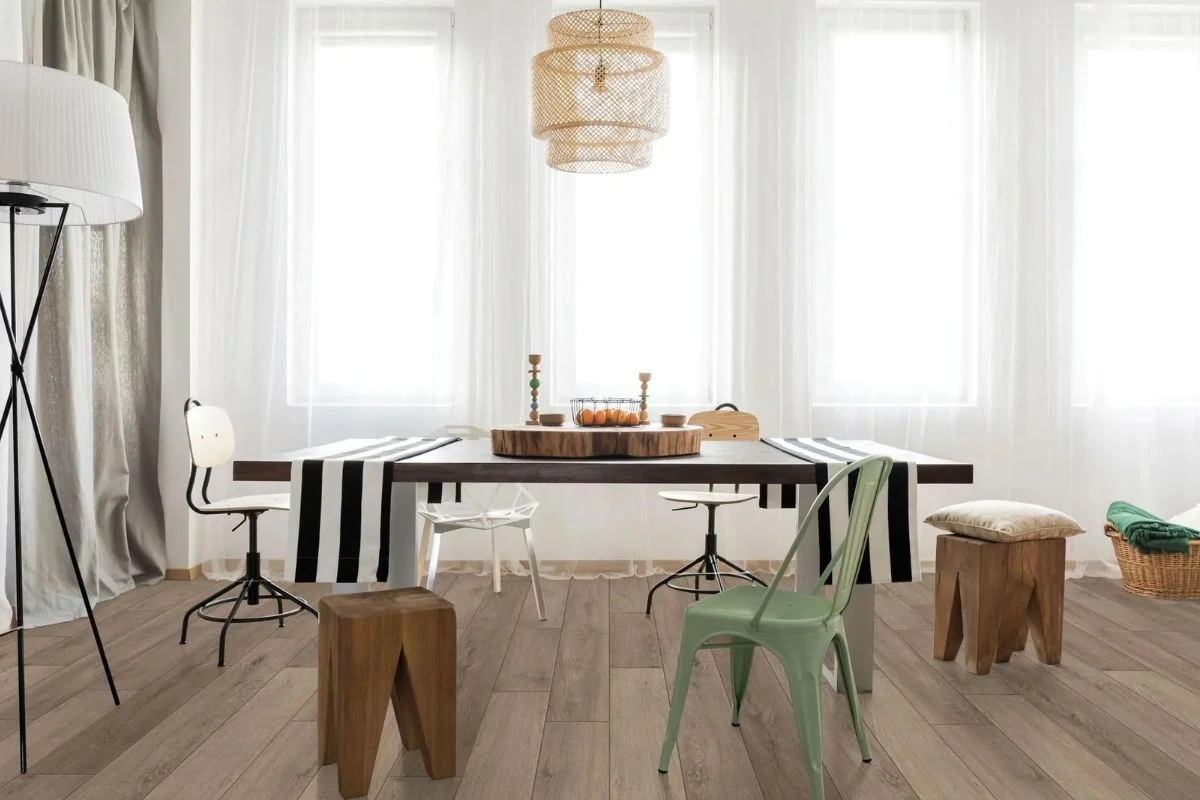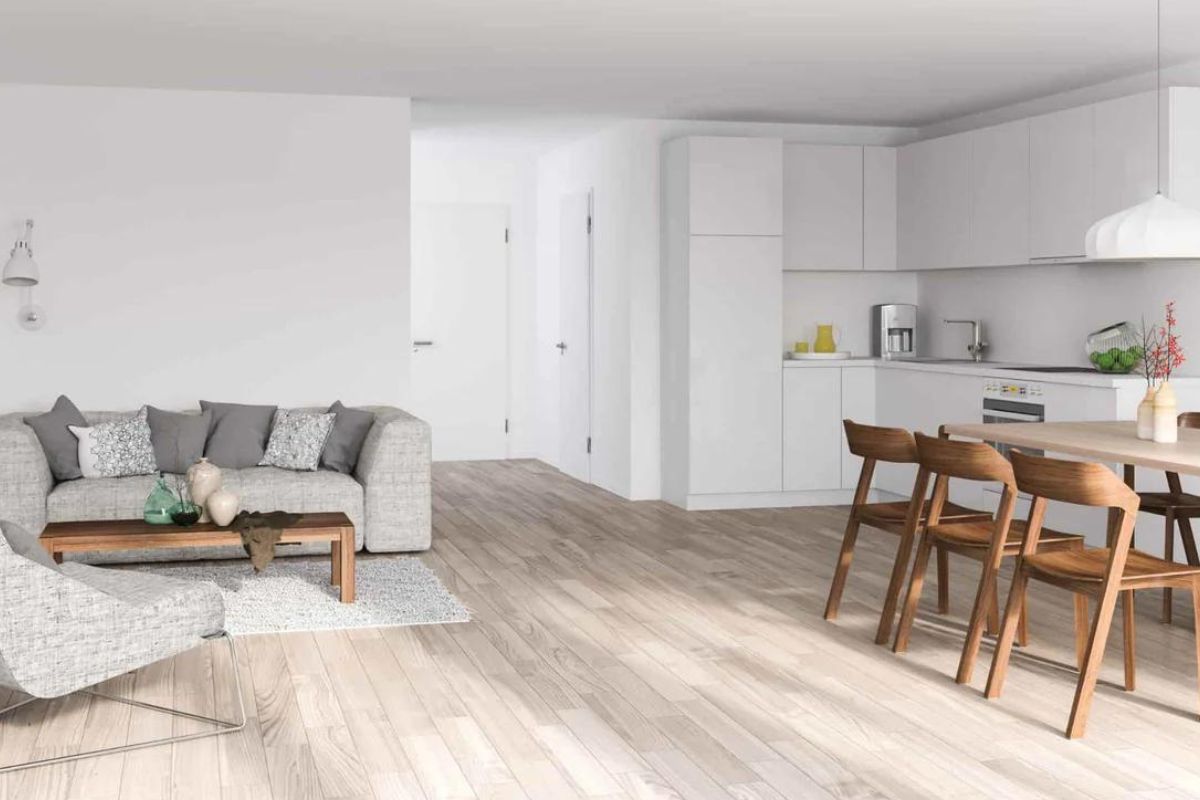
Comparison of Vinyl Sheets with Other Flooring Options
Choosing the right flooring for your home or commercial space is a significant decision that impacts both aesthetics and functionality. With a plethora of flooring options available in the market, including hardwood, laminate, tile, carpet, and vinyl, it can be challenging to determine which one best suits your needs. In this comparison, we will explore the characteristics, advantages, and drawbacks of vinyl sheets flooring in comparison to other popular flooring options.
Vinyl sheets have gained popularity in recent years due to their versatility, durability, and affordability. However, it’s essential to weigh the pros and cons of vinyl sheets against other types of flooring to make an informed decision that meets your requirements and preferences. By examining factors such as cost, durability, maintenance, installation, and design options, we can better understand how vinyl sheets stack up against alternative flooring choices. Whether you’re renovating your home, upgrading your office space, or designing a commercial establishment, this comparison will help you evaluate the merits of vinyl sheets flooring relative to other options on the market.
Definition of Vinyl Sheets
Vinyl sheets refer to flooring material made from polyvinyl chloride (PVC) and other additives, manufactured into large, flexible sheets that can be rolled out for installation. These sheets are typically used as a cost-effective and versatile flooring option in residential and commercial spaces. Vinyl sheets come in various thicknesses, designs, and textures, offering a wide range of options to suit different preferences and needs. They are known for their durability, water resistance, ease of maintenance, and affordability, making them a popular choice for homeowners and business owners alike.
Advantages and Disadvantages of Vinyl Sheets
Vinyl sheets offer a range of benefits and drawbacks that make them a suitable flooring choice for certain applications. Understanding these advantages and disadvantages can help homeowners and business owners make informed decisions when selecting flooring options.
Advantages:
- Affordability: Vinyl sheets are generally more budget-friendly compared to other flooring options like hardwood or ceramic tile. They offer cost-effective solutions for those looking to update their floors without breaking the bank.
- Durability: Vinyl sheets are highly durable and resistant to scratches, stains, and dents, making them ideal for high-traffic areas in both residential and commercial settings. They can withstand the rigors of daily wear and tear, maintaining their appearance for years to come.
- Water Resistance: One of the key advantages of vinyl sheets is their water resistance. Unlike hardwood or laminate flooring, vinyl sheets are impervious to moisture, making them suitable for areas prone to spills and humidity, such as bathrooms, kitchens, and basements.
- Easy Maintenance: Vinyl sheets are incredibly easy to clean and maintain. Regular sweeping, vacuuming, and occasional mopping with a mild detergent are all that’s needed to keep them looking their best. They require minimal upkeep compared to other flooring options.
- Versatility: Vinyl sheets come in a wide range of colors, patterns, and textures, allowing for customization to match various design preferences and styles. Whether you prefer the look of hardwood, stone, or tile, there’s a vinyl sheet option to suit your aesthetic preferences.
Disadvantages:
- Susceptibility to Damage: While vinyl sheets are durable, they are not completely immune to damage. Heavy furniture or sharp objects can still cause scratches or dents on the surface, especially if proper precautions are not taken.
- Limited Repair Options: Unlike hardwood flooring, which can be sanded and refinished to repair damage, vinyl sheets have limited repair options. In the event of significant damage, the entire sheet may need to be replaced, which can be costly and time-consuming.
- Vulnerability to Fading: Vinyl sheets may be prone to fading over time, especially when exposed to direct sunlight. UV rays can cause colors to fade or change, leading to uneven discoloration across the flooring surface.
- Susceptibility to Temperature Changes: Extreme temperature changes can affect the stability of vinyl sheets, causing them to expand or contract. Proper installation techniques and climate control measures are necessary to minimize the risk of issues related to temperature fluctuations.
- Environmental Concerns: While vinyl sheets are not inherently eco-friendly, advancements in manufacturing processes have led to the development of more sustainable and recyclable options. However, disposal and recycling of vinyl materials still pose environmental challenges.
Types of Vinyl Sheets
Vinyl sheets come in various types, each offering unique features and benefits to suit different preferences and applications. Here are some common types of vinyl sheets:
- Printed Vinyl Sheets: Printed vinyl sheets feature designs and patterns printed directly onto the surface of the vinyl material. These sheets can replicate the look of natural materials such as hardwood, stone, and tile, providing a cost-effective alternative to traditional flooring options. Printed vinyl sheets offer a wide range of design possibilities, allowing homeowners to achieve the desired aesthetic for their living spaces.
- Luxury Vinyl Sheets (LVS): Luxury vinyl sheets are premium-quality vinyl flooring options that combine durability, aesthetics, and performance. LVS often feature advanced printing and embossing technologies that create realistic textures and patterns, including intricate wood grains and stone textures. These sheets are highly durable and water-resistant, making them suitable for high-traffic areas and moisture-prone spaces like kitchens and bathrooms.
- Fiberglass-Backed Vinyl Sheets: Fiberglass-backed vinyl sheets are reinforced with a layer of fiberglass material, providing added stability and dimensional stability. The fiberglass backing helps prevent the vinyl sheets from curling, warping, or shrinking over time, ensuring a flat and even installation. These sheets are ideal for areas with fluctuating temperature and humidity levels, such as basements and sunrooms.
- Vinyl Composition Tile (VCT): Vinyl composition tile, or VCT, is a type of vinyl flooring commonly used in commercial and institutional settings. VCT consists of colored vinyl chips combined with limestone and other filler materials, pressed together to form solid tiles. These tiles are durable, low-maintenance, and resistant to scratches and stains, making them suitable for high-traffic areas like schools, hospitals, and retail spaces.
- Homogeneous Vinyl Sheets: Homogeneous vinyl sheets are made of a single layer of vinyl material throughout the thickness of the sheet. These sheets offer uniform color and pattern, providing a seamless appearance when installed. Homogeneous vinyl sheets are highly durable and resistant to wear, making them ideal for heavy-duty commercial applications where durability and longevity are paramount.
- Heterogeneous Vinyl Sheets: Heterogeneous vinyl sheets consist of multiple layers of vinyl material, each serving a specific purpose such as wear resistance, design aesthetics, and dimensional stability. These sheets may feature a printed design layer, a wear layer for added durability, and a backing layer for stability and support. Heterogeneous vinyl sheets offer a wide range of design options and performance characteristics, making them suitable for various residential and commercial applications.
- Loose-Lay Vinyl Sheets: Loose-lay vinyl sheets are designed for easy installation without the need for adhesive or glue. These sheets feature a heavy backing layer that provides stability and prevents shifting or movement once installed. Loose-lay vinyl sheets are ideal for temporary installations or areas where frequent access to subflooring is required, such as rental properties and commercial spaces.
- Peel-and-Stick Vinyl Sheets: Peel-and-stick vinyl sheets come with an adhesive backing that allows for quick and easy installation. Homeowners can simply peel off the backing and press the sheets firmly onto the subfloor, eliminating the need for additional adhesives or tools. Peel-and-stick vinyl sheets are popular options for DIY projects and small-scale renovations, providing a hassle-free flooring solution for kitchens, bathrooms, and laundry rooms.
Comparison of Vinyl Sheets with Other Flooring Options
Vinyl sheets have become a popular choice for homeowners and designers looking for durable, affordable, and stylish flooring solutions. However, when considering flooring options for your home, it’s essential to understand how vinyl sheets stack up against other popular choices. Let’s explore a comparison of vinyl sheets with other flooring options to help you make an informed decision for your space:
Vinyl Sheets vs. Hardwood Flooring:
- Appearance: Hardwood flooring offers a timeless, natural look with unique grain patterns and color variations. Vinyl sheets can replicate the appearance of hardwood but may lack the authenticity of real wood.
- Durability: Hardwood flooring is susceptible to scratches, dents, and water damage, requiring regular maintenance and refinishing. Vinyl sheets are highly durable and resistant to moisture, making them suitable for high-traffic areas and moisture-prone spaces.
- Cost: Hardwood flooring tends to be more expensive than vinyl sheets, both in terms of material cost and installation. Vinyl sheets offer a cost-effective alternative to hardwood without sacrificing durability or aesthetics.
Vinyl Sheets vs. Ceramic Tile:
- Installation: Ceramic tile installation can be labor-intensive and time-consuming, requiring skilled professionals to achieve precise results. Vinyl sheets are relatively easy to install and can be done as a DIY project, saving time and installation costs.
- Maintenance: Ceramic tile requires grout maintenance and periodic sealing to prevent stains and water damage. Vinyl sheets are low-maintenance and easy to clean, requiring only regular sweeping and occasional mopping.
- Comfort: Vinyl sheets offer a more comfortable and cushioned feel underfoot compared to hard ceramic tile. Vinyl’s resilience makes it more forgiving on joints and provides better sound insulation.
Vinyl Sheets vs. Laminate Flooring:
- Moisture Resistance: Laminate flooring is susceptible to moisture damage and may warp or swell when exposed to water. Vinyl sheets are waterproof and can withstand moisture, making them suitable for kitchens, bathrooms, and basements.
- Durability: Laminate flooring is prone to scratches and may show wear over time, especially in high-traffic areas. Vinyl sheets are highly durable and resistant to scratches, stains, and dents, maintaining their appearance even in busy households.
- Aesthetics: Laminate flooring offers a wide range of wood and tile looks, but the visual authenticity may vary. Vinyl sheets provide realistic wood and stone designs with embossed textures, offering a high-end aesthetic without the cost of natural materials.
- Vinyl Sheets vs. Carpet:
- Cleanliness: Carpeting can trap dust, allergens, and pet dander, requiring regular vacuuming and professional cleaning. Vinyl sheets are hypoallergenic and easy to clean, making them ideal for allergy sufferers and pet owners.
- Durability: Carpeting may show signs of wear and staining over time, especially in high-traffic areas. Vinyl sheets are durable and resistant to stains, making them a practical choice for homes with children and pets.
- Versatility: Carpeting comes in a variety of styles, colors, and textures, offering warmth and comfort underfoot. Vinyl sheets offer versatility in design and can mimic the look of carpet, hardwood, or tile, providing options to suit different décor preferences.
Maintenance Tips for Vinyl Sheets
Vinyl sheets are known for their durability, water resistance, and low maintenance requirements, making them a popular choice for homeowners. To keep your vinyl sheets looking pristine and prolong their lifespan, consider the following maintenance tips:
- Regular Cleaning: Establish a routine cleaning schedule to remove dirt, dust, and debris from the surface of your vinyl sheets. Sweep or vacuum the floor regularly using a soft-bristle broom or a vacuum cleaner with a brush attachment to prevent scratches.
- Gentle Mopping: Periodically mop the vinyl sheets with a damp mop and a mild cleaning solution to remove stubborn dirt or stains. Avoid using abrasive cleaners, harsh chemicals, or excessive water, as they can damage the flooring and strip away the protective finish.
- Immediate Spill Cleanup: Promptly clean up spills and liquid messes to prevent staining and damage to the vinyl sheets. Use a soft cloth or paper towel to blot up the spill, working from the outer edges toward the center to avoid spreading the liquid.
- Avoid Sharp Objects: Prevent scratches, dents, and gouges on your vinyl sheets by placing felt pads or furniture glides under heavy furniture legs and sharp objects. Avoid dragging or sliding heavy furniture across the floor, as it can leave permanent marks and damage the surface.
- Use Entrance Mats: Place entrance mats or rugs at entryways and high-traffic areas to trap dirt, grit, and moisture from shoes before they reach the vinyl sheets. Mats with non-staining backings help prevent discoloration and protect the flooring from abrasion caused by foot traffic.
- Protective Furniture Pads: Attach protective furniture pads or coasters to the bottom of chairs, tables, and other furniture to prevent scratches and indentations on the vinyl sheets. Replace the pads regularly to maintain effective protection and prevent damage to the floor surface.
- Avoid Rubber Backed Mats: Refrain from using rubber-backed mats or rugs on vinyl sheets, as they can discolor the surface and leave stains over time. Opt for non-staining, non-abrasive mats made of natural materials like cotton or synthetic fibers designed for use on vinyl flooring.
- Regular Inspections: Periodically inspect the vinyl sheets for signs of wear, damage, or loose seams. Pay attention to areas prone to heavy foot traffic, such as entryways, hallways, and kitchen areas. Address any issues promptly to prevent further damage and maintain the integrity of the flooring.
- Avoid Harsh Chemicals: Avoid using abrasive cleaners, ammonia-based products, wax-based polishes, and solvent-based cleaners on vinyl sheets, as they can cause discoloration, dullness, or damage to the surface. Stick to gentle cleaning solutions recommended by the flooring manufacturer.
- Prevent Sun Damage: Minimize direct sunlight exposure to the vinyl sheets by using curtains, blinds, or UV-resistant window treatments to prevent fading and discoloration. Consider installing window films or tinted glass to filter harmful UV rays and protect the flooring from sun damage over time.
Conclusion
In conclusion, vinyl sheets offer a versatile, durable, and low-maintenance flooring option for homeowners looking to enhance their living spaces. With their numerous advantages, including water resistance, affordability, and easy installation, vinyl sheets have become increasingly popular in both residential and commercial settings.




0 comments